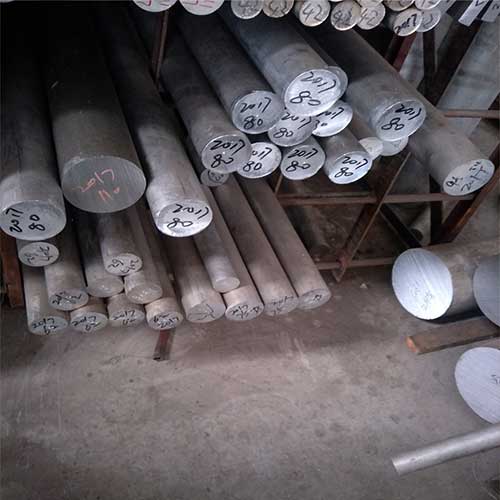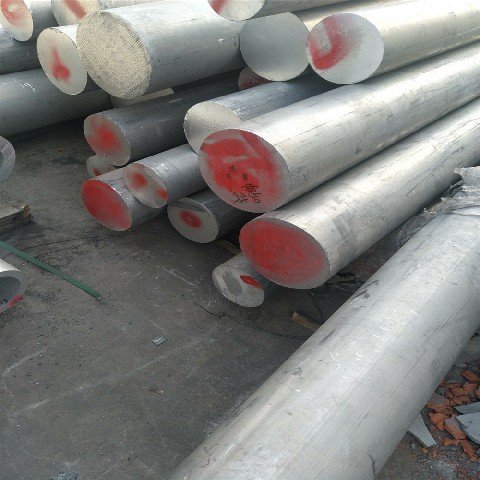Welcome to My Blog!
Before we dive into the content, I’d love for you to join me on my social media platforms where I share more insights, engage with the community, and post updates. Here’s how you can connect with me:
Facebook:https://www.facebook.com/profile.php?id=61565500692293
Now, let’s get started on our journey together. I hope you find the content here insightful, engaging, and valuable.
Table of Contents
Introduction

When it comes to selecting materials for engineering and manufacturing projects, the choice of materials can make or break the success of the endeavor. Solid aluminum rods are popular for their versatility, strength, and lightweight properties. This comprehensive guide will walk you through the factors to consider when choosing the right solid aluminum rod for your project.
Understanding Solid Aluminum Rods
What is a Solid Aluminum Rod?
A solid aluminum rod is a cylindrical metal bar made from aluminum, known for its high strength-to-weight ratio, corrosion resistance, and workability. These rods are used in a variety of applications, from structural components to mechanical parts.
Key Features of Solid Aluminum Rods
Solid aluminum rods are valued for their durability, ease of machining, and excellent thermal and electrical conductivity. They are also recyclable, making them an environmentally friendly choice.
Factors to Consider When Choosing Solid Aluminum Rods
Material Specifications
The first step in choosing the right solid aluminum rod is understanding the specific material specifications required for your project. This includes the grade of aluminum, diameter, length, and surface finish.
Mechanical Properties
The mechanical properties of the rod, such as tensile strength, yield strength, and hardness, are critical factors that should align with the demands of your project.
Corrosion Resistance
Aluminum’s natural resistance to corrosion is a significant advantage, but the specific environment in which the rod will be used may require additional considerations, such as protective coatings or specific alloy compositions.
Weight and Strength Requirements
For projects where weight is a critical factor, such as in aerospace or automotive applications, the high strength-to-weight ratio of solid aluminum rods makes them an ideal choice.
Machinability
The ability to machine the aluminum rod into precise parts is essential. Aluminum’s good machinability reduces manufacturing time and costs.
Applications of Solid Aluminum Rods
Structural Components
In construction and engineering, solid aluminum rods are used as structural components due to their strength and light weight.
Mechanical Parts
In machinery and equipment manufacturing, these rods are used for various mechanical parts, such as shafts, axles, and couplings.
Electrical Conductors
Aluminum’s excellent electrical conductivity makes solid aluminum rods suitable for use as electrical conductors in power transmission and distribution.
Heat Exchangers
In industries requiring heat exchangers, solid aluminum rods are used for their excellent thermal conductivity and resistance to corrosion.
Choosing the Right Grade of Aluminum
Common Grades of Aluminum
Aluminum is available in various grades, each with its own set of properties. Common grades include 1000 series (99% pure aluminum), 2000 series (aluminum-copper), 3000 series (aluminum-manganese), 5000 series (aluminum-magnesium), and 6000 series (aluminum-silicium).
Grade Selection Criteria
The selection of the right grade depends on the specific requirements of your project, such as strength, weldability, formability, and resistance to corrosion.
The Future of Solid Aluminum Rods
Technological Advancements
Advancements in material science will continue to improve the properties of aluminum rods, making them even more suitable for a wider range of applications.
Sustainability and Recycling
The recyclability of aluminum plays a significant role in its sustainability. Future trends will focus on improving recycling processes and reducing the environmental impact of aluminum production.
Customization and Additive Manufacturing
The rise of additive manufacturing offers new possibilities for the customization of solid aluminum rods, allowing for the creation of complex geometries and reduced material waste.
Solid Aluminum Rod Specifications Table
| Specification | Description |
|---|---|
| Grade | Determines the alloy composition and properties of the rod |
| Diameter | Varies based on the application requirements |
| Length | Customizable to fit the specific needs of the project |
| Surface Finish | Can include mill finish, anodized, or other treatments |
| Mechanical Properties | Tensile strength, yield strength, and hardness |
| Corrosion Resistance | Natural resistance can be enhanced with coatings or specific alloys |
Detailed Discussion on Solid Aluminum Rods

Material Specifications and Project Requirements
Understanding the material specifications is crucial for selecting the right solid aluminum rod. This includes knowing the required grade, diameter, and length of the rod.
Mechanical Properties and Strength
The mechanical properties of solid aluminum rods are essential for ensuring the rod can withstand the stresses it will encounter in its application.
Corrosion Resistance in Various Environments
While aluminum has natural corrosion resistance, the specific environment in which the rod will be used may require additional considerations.
Balancing Weight and Strength
For projects where weight is a critical factor, the high strength-to-weight ratio of solid aluminum rods is a significant advantage.
Machinability and Manufacturing Efficiency
Aluminum’s good machinability reduces manufacturing time and costs, making it a popular choice for precision parts.
Grade Selection and Project Success
The grade of aluminum can significantly impact the success of your project. It’s essential to choose the right grade based on the specific requirements of your application.
The Role of Solid Aluminum Rods in Sustainable Manufacturing
As a recyclable material, solid aluminum rods contribute to sustainable manufacturing practices. The focus on improving recycling processes will be crucial for the future.
Customization and the Rise of Additive Manufacturing
Additive manufacturing offers new possibilities for the customization of solid aluminum rods, allowing for the creation of complex geometries and reduced material waste.
Conclusion
Choosing the right solid aluminum rod for your project involves considering various factors, including material specifications, mechanical properties, corrosion resistance, weight and strength requirements, and machinability. As technology advances, solid aluminum rods will continue to be an essential material in many industries, offering a balance of strength, lightweight properties, and sustainability.
FAQ
What is a solid aluminum rod?
A solid aluminum rod is a cylindrical metal bar made from aluminum, valued for its strength, lightweight properties, and corrosion resistance.
Why are solid aluminum rods popular in various industries?
They are popular due to their high strength-to-weight ratio, ease of machining, and excellent thermal and electrical conductivity.
How do I choose the right solid aluminum rod for my project?
Consider factors such as material specifications, mechanical properties, corrosion resistance, weight and strength requirements, and machinability.
How does the grade of aluminum affect my project?
The grade selection depends on the specific requirements of your project, such as strength, weldability, formability, and resistance to corrosion.





